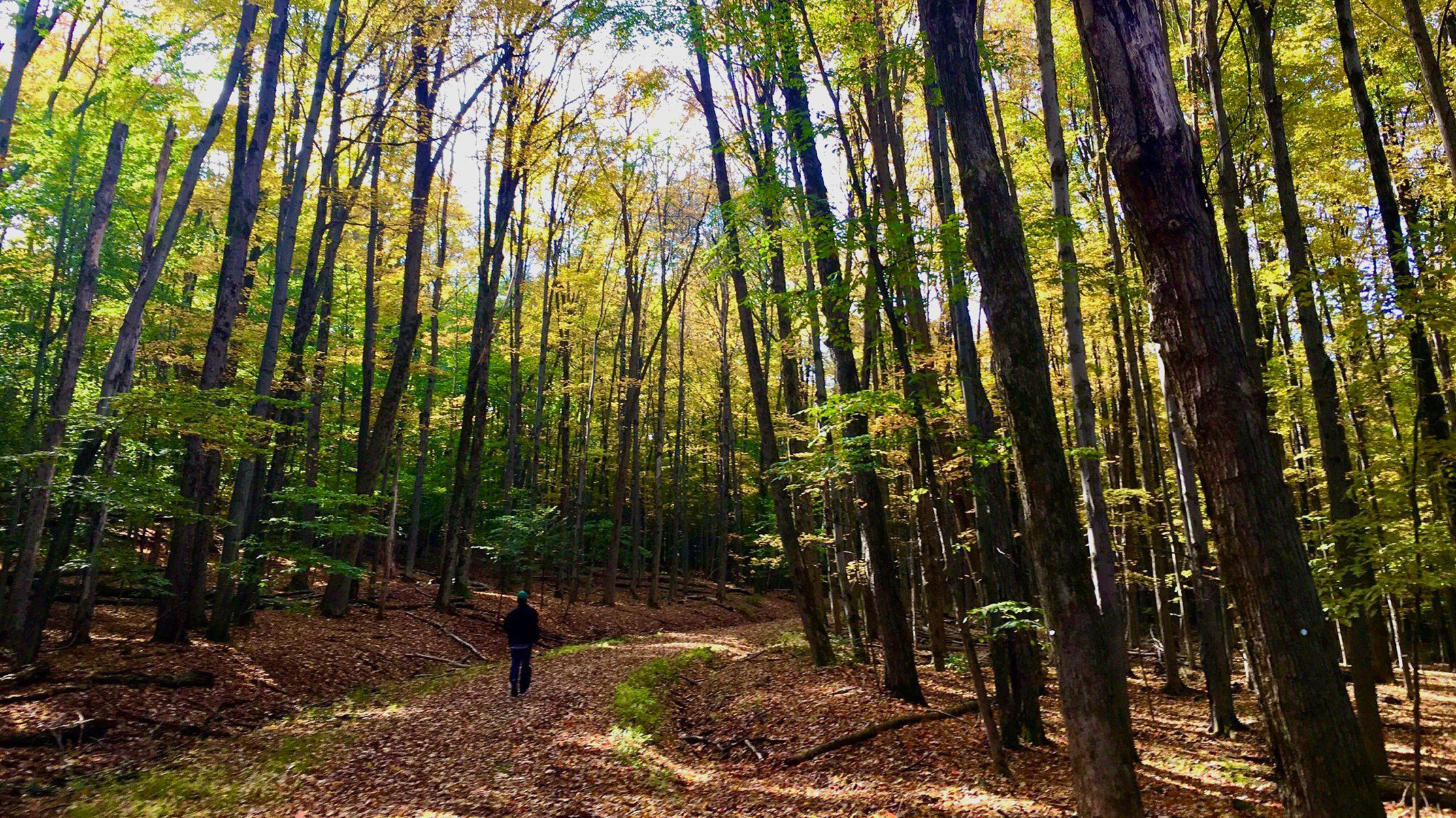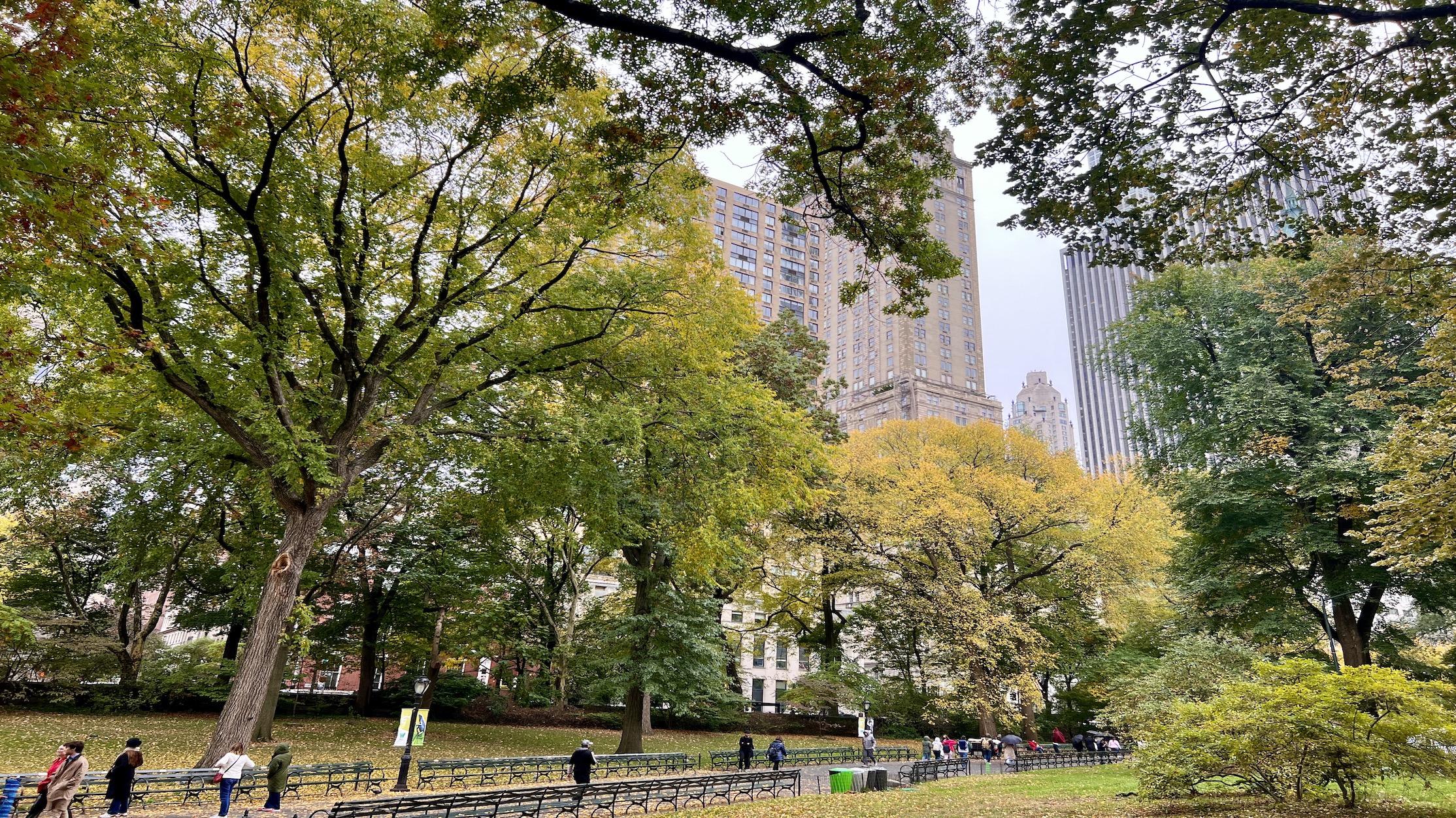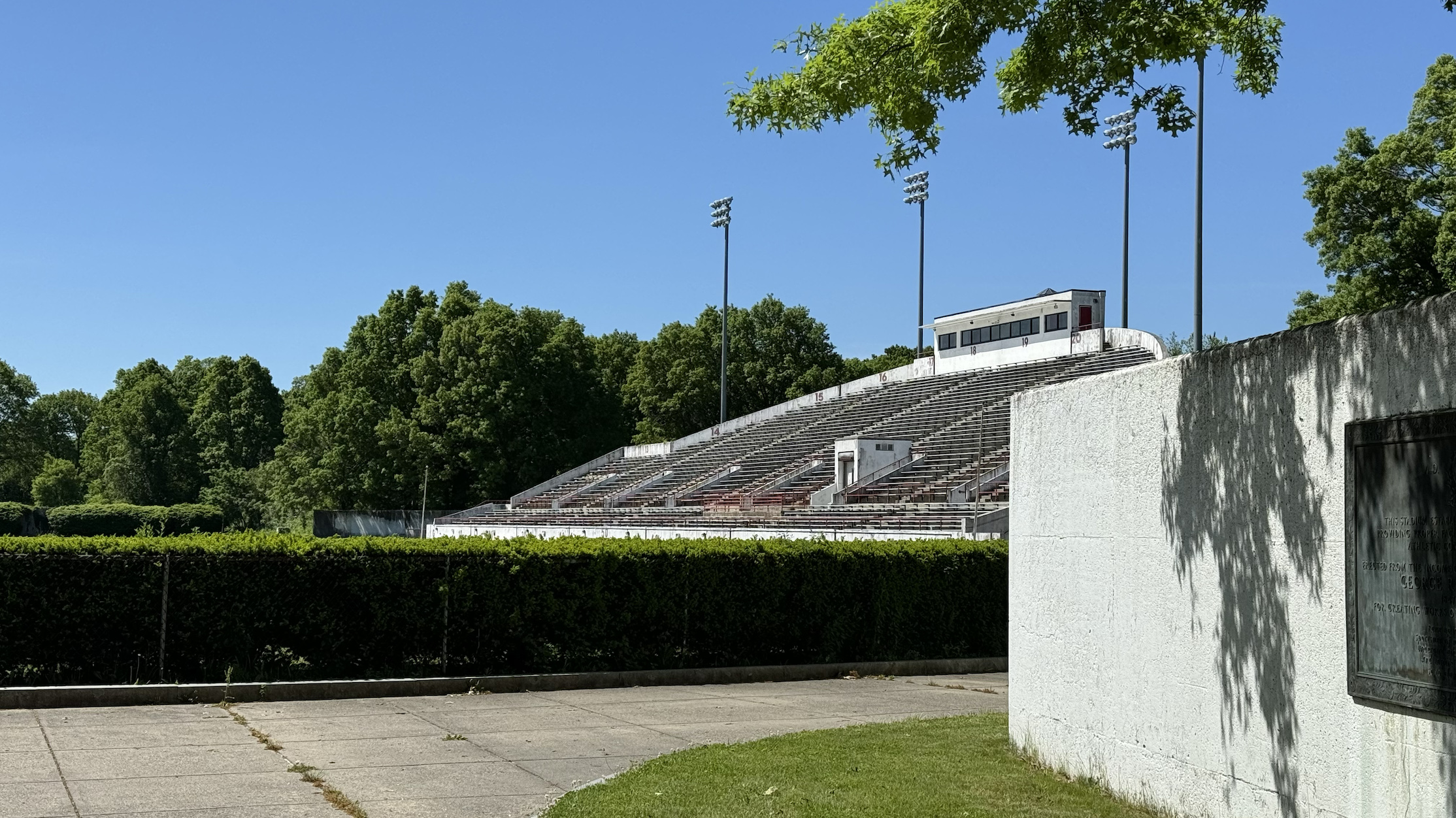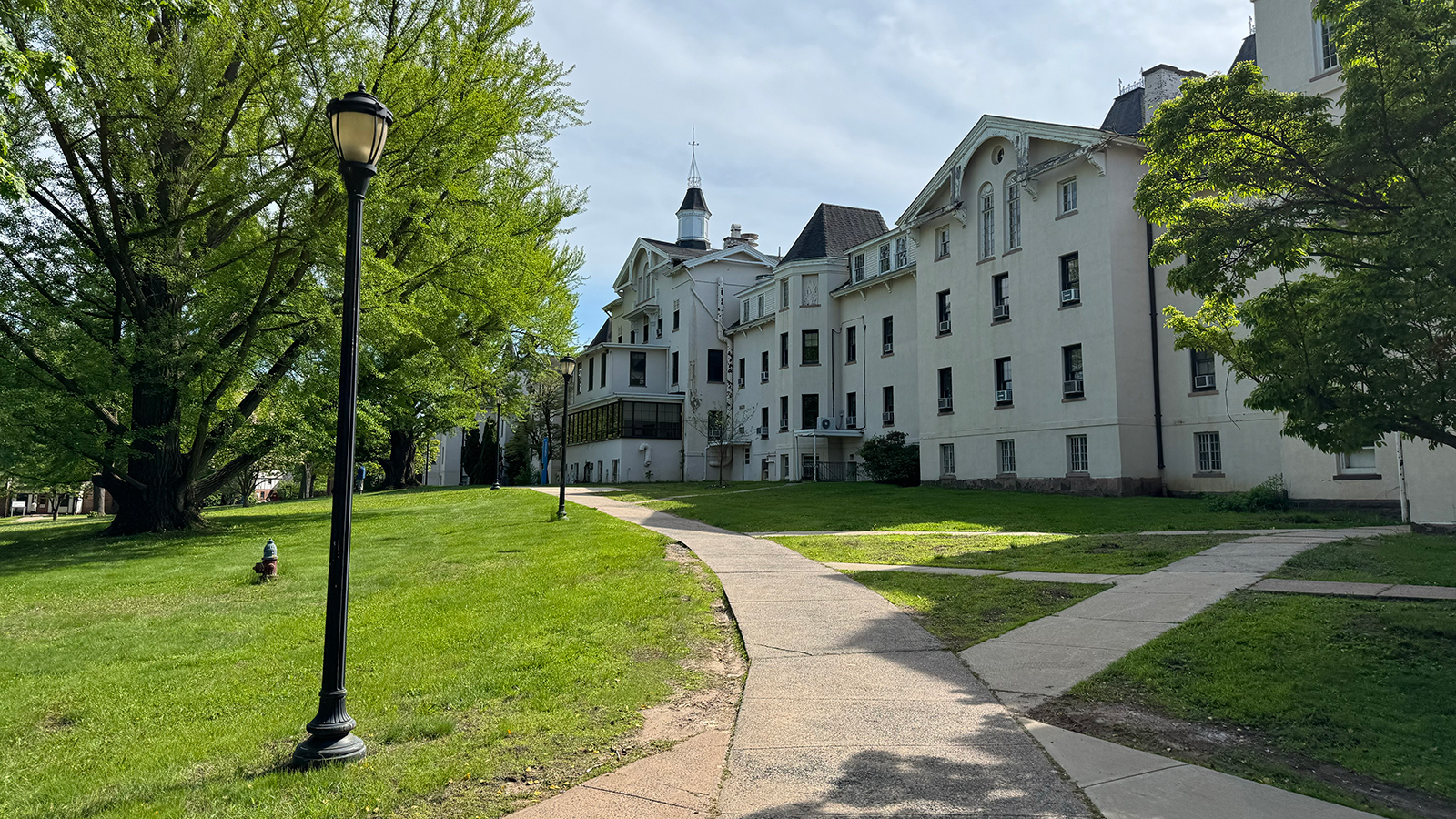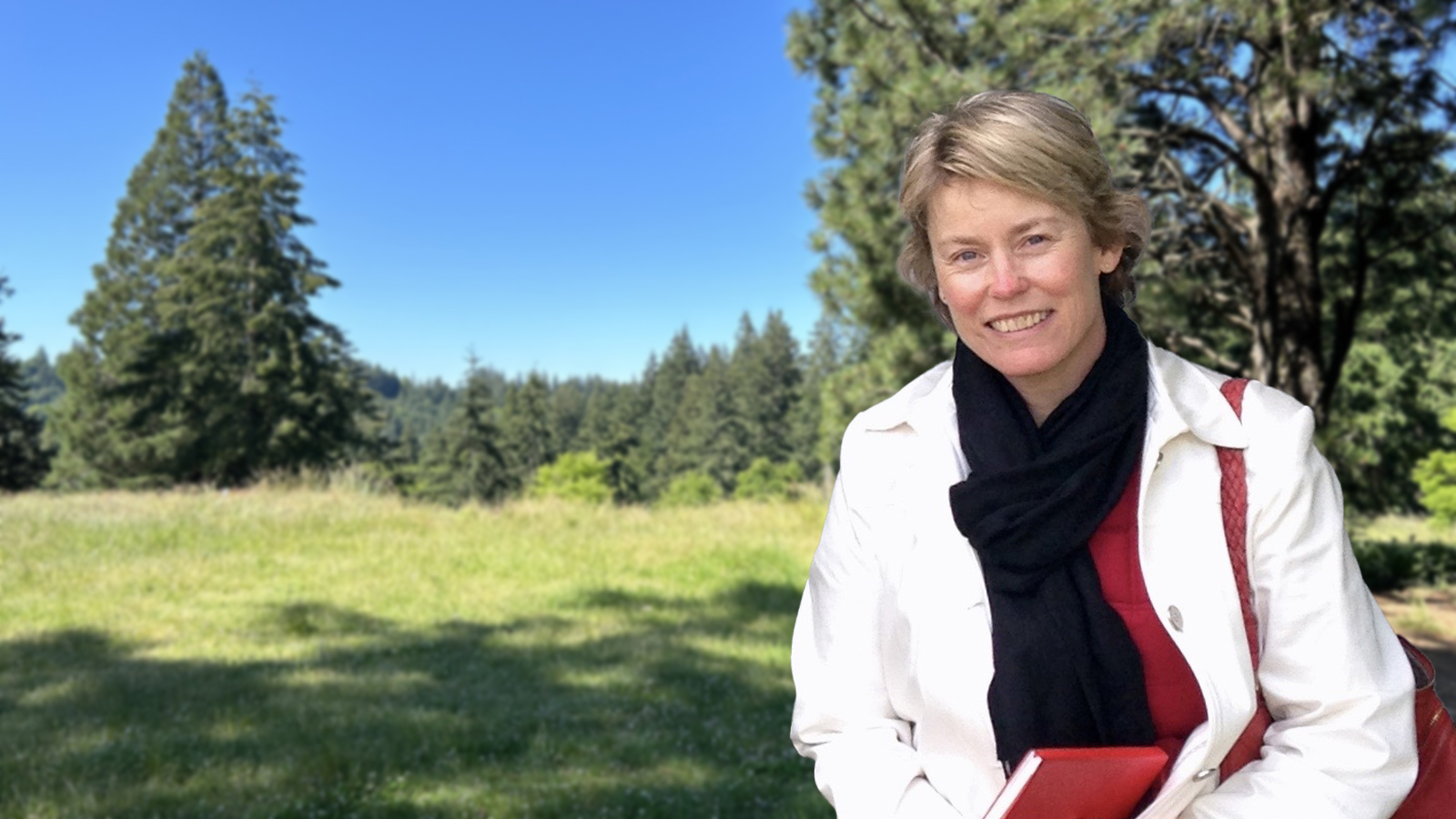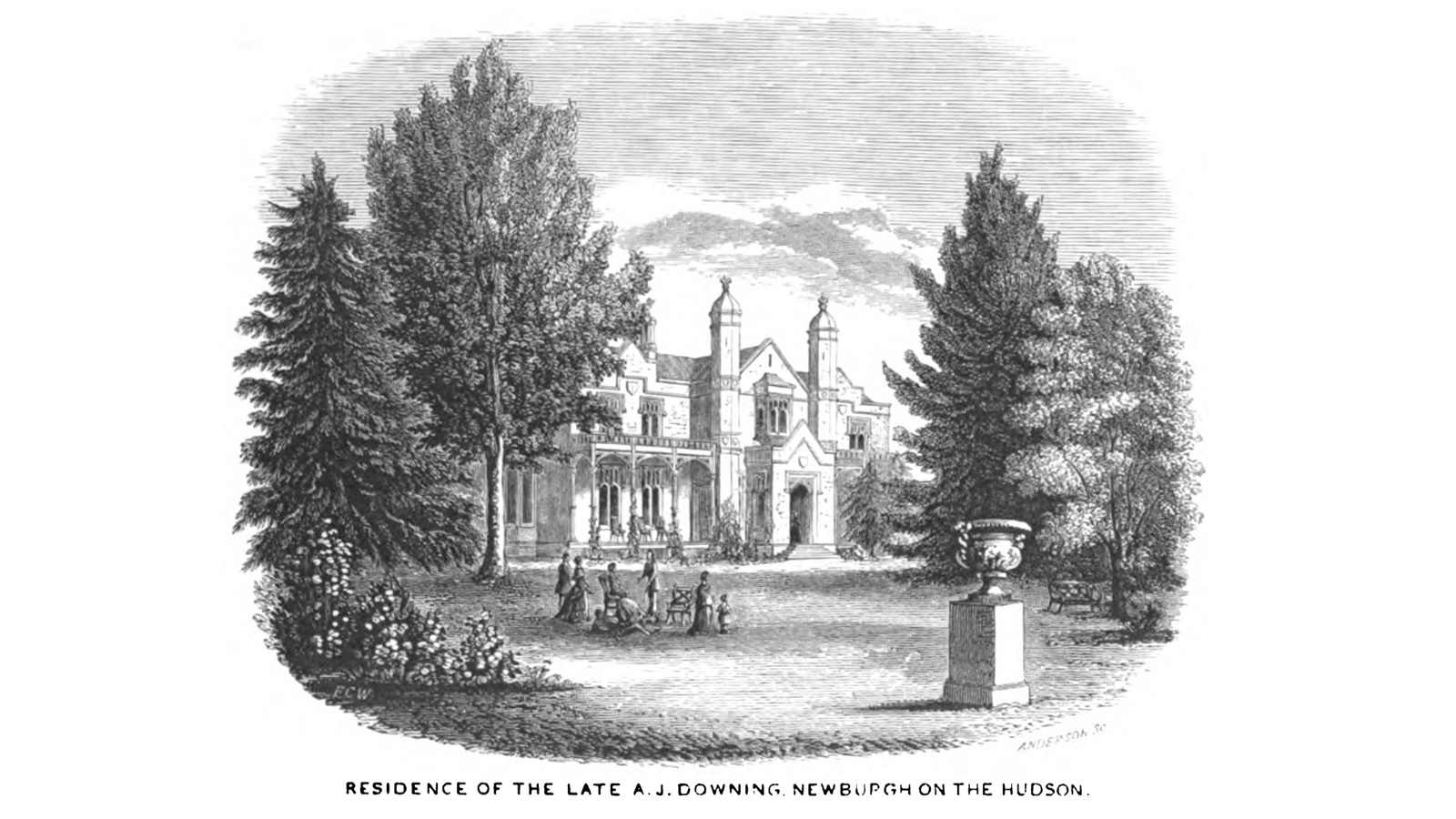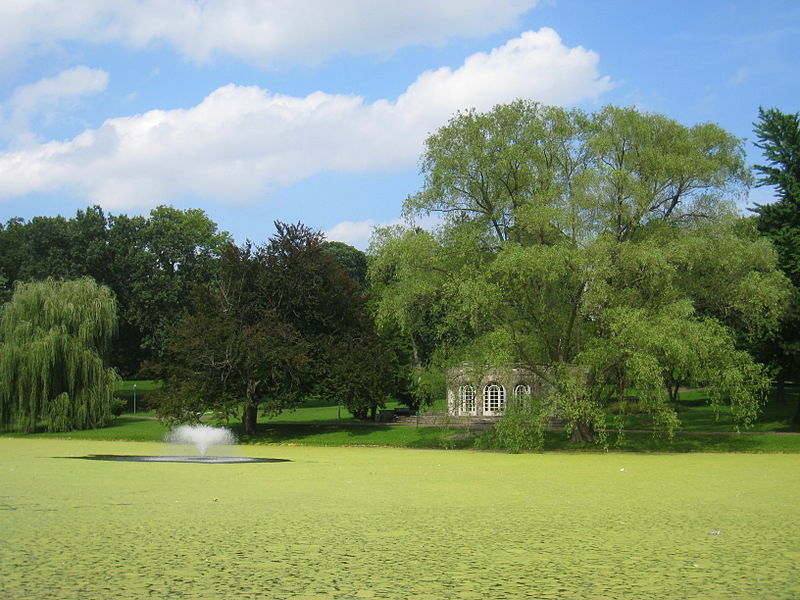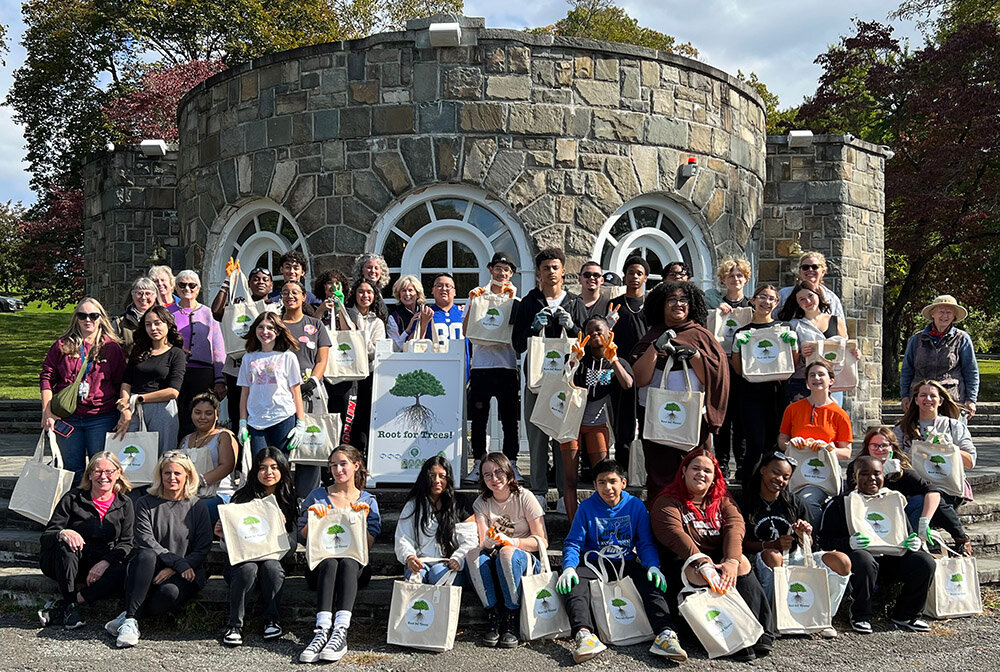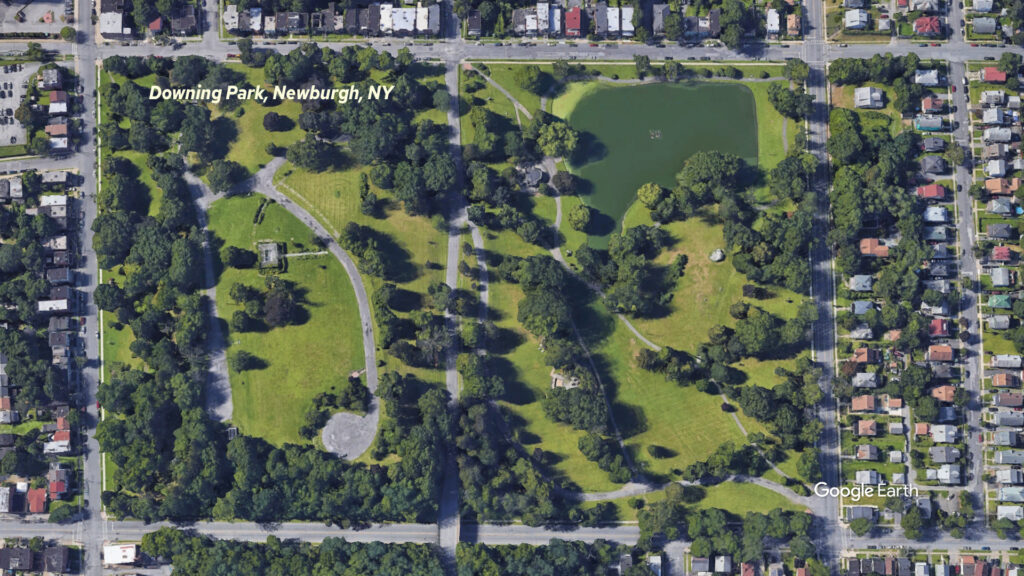
In 1851, Frederick Law Olmsted traveled to Newburgh, New York, to meet with Newburgh-born-and-raised Andrew Jackson Downing. Olmsted sought to publish articles in Downing’s popular journal, The Horticulturist. Downing was impressed with Olmsted’s writing and his understanding not only of land but of the necessity of natural open space, and forests for people who lived in an urban setting.
In 1857, Olmsted took a job as superintendent of the wild, rocky landscape that made up Central Park, enlisting workers to move boulders, redirect a stream, plant trees, and provide structure to the predominant wildness. Andrew Jackson Downing, on his way to New York on a steamship, was tragically killed, at just thirty-six, when the ship caught fire. Earlier, Downing had introduced Olmsted to his assistant-turned-partner, Calvert Vaux, a young English architect. In 1858, Olmsted and Vaux entered a competition for the design of Central Park, won the competition, and became landscape design partners. This opportunity transformed Olmsted’s life, and the practice of landscape architecture became his passion. Through the Olmsted and Vaux partnership, their reputation grew, and they were in great demand all over the United States and Canada. The two brought their sons into the business, and in 1895, they designed a 35-acre park in Newburgh, naming it after Andrew Jackson Downing.
Downing Park had everything Central Park had: a stream, rocks, a pond— and a hill— which, from its highest point, had magnificent views of the Hudson River and the mountains beyond. FLO and Vaux imagined walkways, roads for horse-and-buggies crossing through the park, and an area for concerts and parades. The list of trees to be planted included Sycamore, Red Oak, American Chestnut, Willow, and a variety of Maples mixed throughout with shrubs and flowering plants. Over time, thousands of daffodils and tulips lined the road up to the pavilion, a spot for special family events near the Observatory (torn down in 1959). It was a sight to behold.
Another prominent feature in Downing Park is the “Polly Pond,” a two-acre body of water fed by a spring and stream. It was so popular in cold winters that a shelter was built by local architect Gordon Marvel so skaters could warm up with hot chocolate. From the 1940s through the 1960s, 30 people from the Newburgh Public Works Department took care of the popular park. In the 1970s, sadly, it became neglected as the Department faced competing demands and diminishing resources. There were only one or two to mow and clean the park.
Fortunately, several strong forces have led to a resurgence of Downing Park. The Downing Park Planning Committee was formed in the 1980s; it launched feasibility studies, grants, and a committed network of dedicated volunteer overseers. The Garden Club of Orange and Dutchess Counties (O&D), a charter member of The Garden Club of America (GCA), chose Downing Park as the site of a significant club initiative, receiving a grant from the GCA, which, when combined with its club grant, was able to begin a two-year project in restoring to health an area that had been badly damaged by a hurricane, including the planting of over a thousand daffodils by O&D members and local school children. And too, the pandemic gave the community a new respect for the park and revived its usage. The community feels it is their park, which is exactly what Frederick Law Olmsted desired— Parks for All People!
On April 23, 2022, the Newburgh community joined with members of O&D, GCA, and the National Association for Olmsted Parks (now the Olmsted Network), at Downing Park to celebrate Frederick Law Olmsted’s 200th birthday. Esteemed speakers included, among others, Newburgh’s Mayor Torrance Harvey. Bright daffodils waved in the sunshine, and the sweet singing voices of students from Newburgh’s High School and San Miguel Academy filled the air.
Today, The Garden Club of Orange and Dutchess Counties’ initiative, Root for Trees!, continues its commitment to Downing Park in collaboration with Newburgh students, the Downing Park Conservancy the Downing Park Urban Farm, and The City of Newburgh. The project focuses on planting and caring for trees and planting a No-Mow Pollinator Garden. Onward and upward!
_______
Jo Marvel Hull is a member of The Garden Club of Orange and Dutchess Counties.





